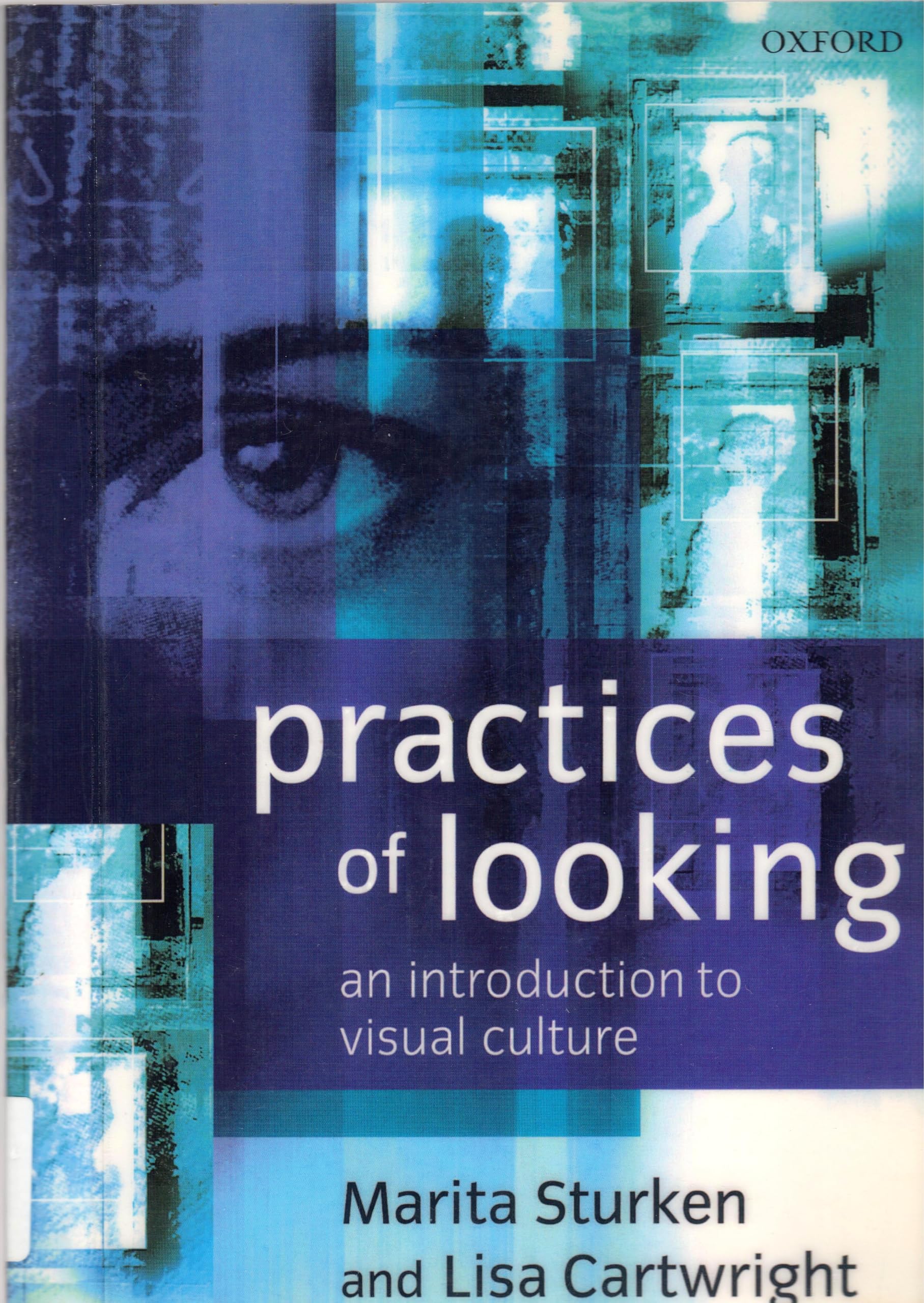
Title

Practices Of Looking: An Introduction To Visual Culture
Delivery time: 8-12 business days (International)
Ideal For Students Studying Visual Culture For The First Time, Practices Of Looking Explores The Ways We Use And Understand Images. Truly Interdisciplinary, This Comprehensive And Engaging Introduction Can Be Used In Courses Across A Range Of Disciplines Including Media And Film Studies, Communications, Art History, And Photography. Marita Sturken And Lisa Cartwright Examine The Diverse Range Of Recent Approaches To Visual Analysis And Lead Students Through Key Theories On Visual Culture, Providing Explanations Of The Fundamentals Of These Theories And Presenting Visual Examples Of How They Function. Using Over 175 Illustrations, They Examine How Imagespaintings, Prints, Photographs, Film, Television, Video, Advertisements, News Images, The Internet, Digital Images, And Images From Sciencegain Meaning In Different Cultural Arenas, From Art And Commerce To Science And The Law. They Also Consider How These Images Travel Globally And In Distinct Cultures; How They Are An Integral And Important Aspect Of Our Lives. The Images Are Analyzed In Relation To A Range Of Cultural And Representational Issues (Desire, Power, The Gaze, Bodies, Sexuality, Ethnicity) And Methodologies (Semiotics, Marxism, Psychoanalysis, Feminism, Postcolonial Theory). Central Topics Such As Ideology, The Concept Of The Spectator, The Role Of Reproduction In Visual Culture, The Mass Media And The Public Sphere, Consumer Culture, And Postmodernism Are Explained In Depth.
By changing our most important processes and
products, we have already made a big leap forward. This ranges from the
increased use of more sustainable fibers to the use of more
environmentally friendly printing processes to the development of
efficient waste management in our value chain.
⚠️ WARNING (California Proposition 65):
This product may contain chemicals known to the State of California to cause cancer, birth defects, or other reproductive harm.
For more information, please visit www.P65Warnings.ca.gov.
Shipping & Returns
Shipping
We ship your order within 2–3 business days for USA deliveries and 5–8 business days for international shipments. Once your package has been dispatched from our warehouse, you'll receive an email confirmation with a tracking number, allowing you to track the status of your delivery.
Returns
To facilitate a smooth return process, a Return Authorization (RA) Number is required for all returns. Returns without a valid RA number will be declined and may incur additional fees. You can request an RA number within 15 days of the original delivery date. For more details, please refer to our Return & Refund Policy page.
Shipping & Returns
Shipping
We ship your order within 2–3 business days for USA deliveries and 5–8 business days for international shipments. Once your package has been dispatched from our warehouse, you'll receive an email confirmation with a tracking number, allowing you to track the status of your delivery.
Returns
To facilitate a smooth return process, a Return Authorization (RA) Number is required for all returns. Returns without a valid RA number will be declined and may incur additional fees. You can request an RA number within 15 days of the original delivery date. For more details, please refer to our Return & Refund Policy page.
Warranty
We provide a 2-year limited warranty, from the date of purchase for all our products.
If you believe you have received a defective product, or are experiencing any problems with your product, please contact us.
This warranty strictly does not cover damages that arose from negligence, misuse, wear and tear, or not in accordance with product instructions (dropping the product, etc.).
Warranty
We provide a 2-year limited warranty, from the date of purchase for all our products.
If you believe you have received a defective product, or are experiencing any problems with your product, please contact us.
This warranty strictly does not cover damages that arose from negligence, misuse, wear and tear, or not in accordance with product instructions (dropping the product, etc.).
Secure Payment
Your payment information is processed securely. We do not store credit card details nor have access to your credit card information.
We accept payments with :
Visa, MasterCard, American Express, Paypal, Shopify Payments, Shop Pay and more.
Secure Payment
Your payment information is processed securely. We do not store credit card details nor have access to your credit card information.
We accept payments with :
Visa, MasterCard, American Express, Paypal, Shopify Payments, Shop Pay and more.
Related Products
You may also like
Frequently Asked Questions
- Q: What is the main focus of 'Practices of Looking: An Introduction to Visual Culture'? A: 'Practices of Looking' primarily explores how we use and understand images across various disciplines, including media studies, art history, and communications.
- Q: Who are the authors of this book? A: The book is authored by Marita Sturken and Lisa Cartwright, both respected scholars in the field of visual culture.
- Q: What is the publication date of this book? A: 'Practices of Looking' was published on February 1, 2001.
- Q: How many pages does the book contain? A: The book contains a total of 385 pages.
- Q: What topics are covered in this book? A: Key topics include ideology, the spectator's role, consumer culture, and various methodologies for visual analysis, such as semiotics and feminism.
- Q: Is this book suitable for beginners? A: Yes, the book is ideal for students studying visual culture for the first time, providing a comprehensive introduction.
- Q: What types of images are analyzed in this book? A: The book analyzes a diverse range of images, including paintings, photographs, advertisements, and digital images from various cultural contexts.
- Q: What edition of the book is available? A: The currently available edition is the First Edition.
- Q: What is the condition of the book? A: The book is in 'New' condition.
- Q: Can this book be used in interdisciplinary studies? A: Yes, it is designed to be interdisciplinary and can be used in courses across various fields related to visual culture.
